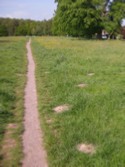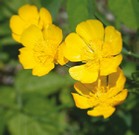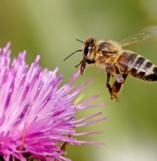

Web design © Graeme de Lande Long. Terms & Conditions.



Community Website
Scaynes Hill Village



SH Wildflower Meadow project
Wild-flower meadows are semi-natural grasslands that have been created by long-term, low-intensity farming practices. Due to our increasing demand for cheap food leading to the spread of intensive agriculture across our countryside, some 97% of our wildflower meadows have been lost. Shockingly this has happened in only the last few decades.
30 May 2015 Posted by Graeme de Lande Long
Once common, meadows full of wildflowers providing food for vital pollinating insects are now a rare sight across Britain. Instead much of the countryside is characterized by the plain green sheen of fields dominated by perennial rye grass, a sterile monoculture which offers little to birds, reptiles or insects, and is one factor behind the decline in so many of our native species of these creatures.
Wildflower meadows are important for biodiversity as they provide habitats and food sources for a huge variety of insects, mammals and birds. Wildflower-rich grasslands are a most important habitat for bees as they provide plants throughout the summer and contain many nectar and pollen rich species. Given the dramatic decline in bee populations the reinstatement of wildflower meadows is particularly relevant. Many wildflower plants are also important nectar sources for adult butterflies while others are eaten by their caterpillars. Wildflower meadows attract a variety of mammals and birds after the bounty on offer or just a safe place to nest. Managing a meadow appropriately will, over time, help to increase the range and number of flowers that it supports, increasing the quantity and quality of foraging habitat.
With this in mind the Sustainability Group has been looking at possible sites around the village to create a wildflower meadow. After discussions with Lindfield Rural Parish Council (LRPC) it was suggested by them that the Common, which they own and manage, might provide just such a location. As an area of semi-natural acid grassland, the Common is already designated a Site of Importance for Nature Conservation (SINC), a designation by the Local Authority in conjunction with the County Wildlife Trust similar to a SSSI (Site of Special Scientific Interest) but with lower thresholds. Consequently the County Ecologist was consulted and a survey of the south end of the Common, which appeared to have become more degraded, was kindly conducted by Margaret Pilkington, emeritus senior lecturer at Sussex University and author of the book 'Wildflower Meadows' published in 2012.

Her conclusion was that although the appropriate wildflower species were present, indicating the likely remains of a former meadow, they were not particularly abundant. However, with the right management there was the basis for restoring it to its former condition. As a result LRPC have agreed to a modified maintenance regime designed to encourage the wildflowers and certain beneficial grasses while discouraging the majority of other grasses. This involves cutting the area earlier in the year - this year it was cut in April rather than May/June - and removing the cuttings to reduce the nutrients in soil. There will then be a second cutting in the Autumn when the wildflower seeds have set, again removing the cuttings.
The change in the area will be gradual, but the current rich yellow flush of meadow buttercups is encouraging. The changes will be monitored to optimise the timing of cuts, and although no planting/seeding of new species is currently planned, this will be considered in the light of the natural developments.
If you would like to learn more about this project the Sustainability Group are holding a 'Meadow Morning' on Sat 27th June (11:00-13:00) when you can join in getting to know and identify some of the 30 different plant species with some expert help on hand.



